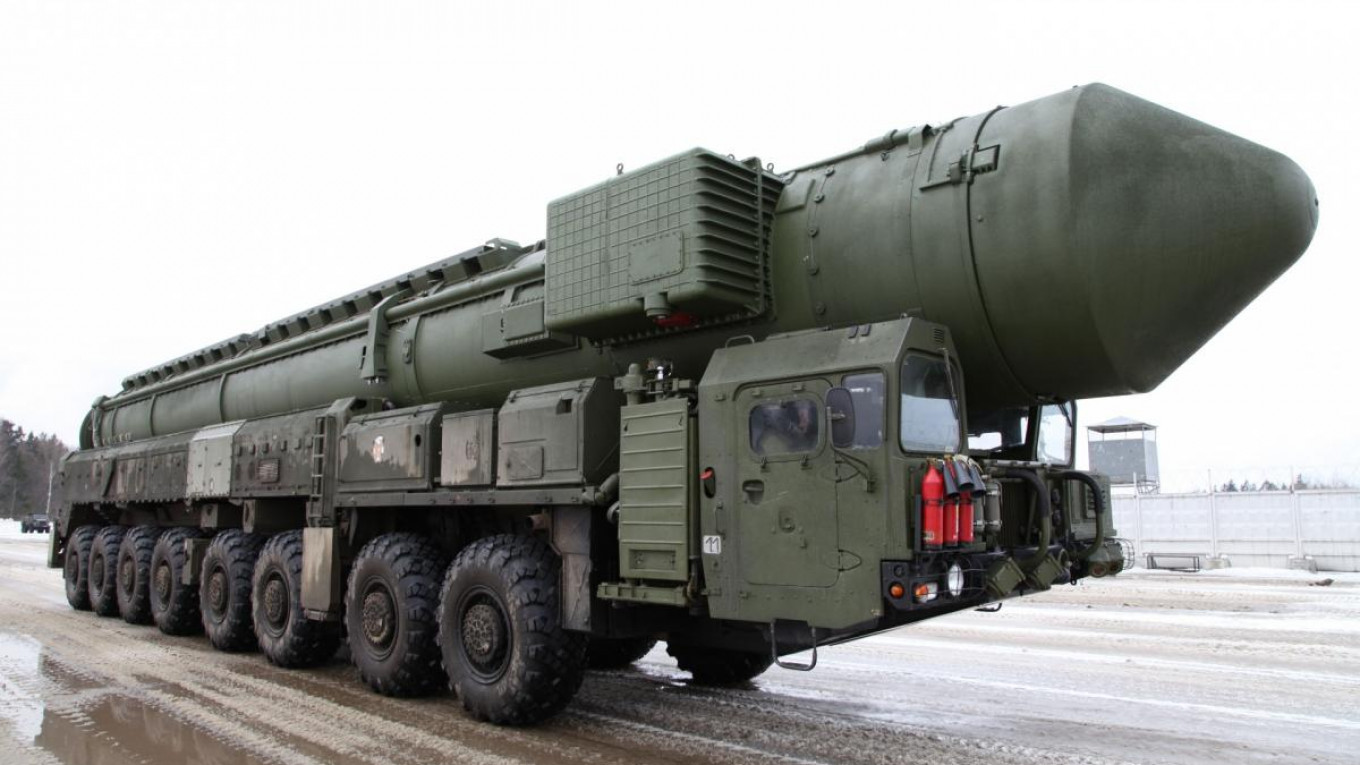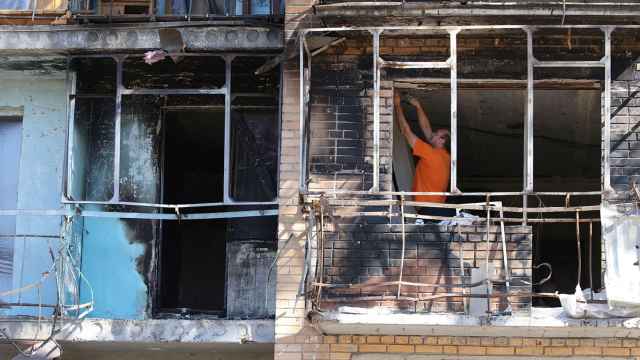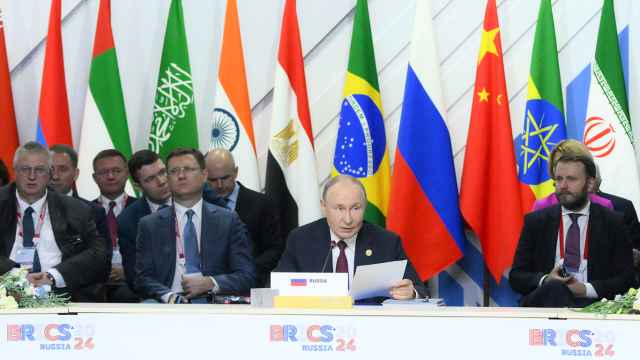At the end of 2019, Russian officials announced that the country's first two hypersonic boost-glide vehicles — a system commonly known as Avangard — had become operational.
Despite the over-the-top pronouncements about these weapons that tend to circulate in Russian officialdom, particularly President Vladimir Putin's March 2018 unveiling speech, the age of hypersonic weapons is undeniably upon us.
China also demonstrated a theater-range hypersonic boost-glide system at its military parade in 2019, and there are numerous other hypersonic projects in the works in Russia and the United States, for example Russia's Tsirkon hypersonic cruise missile.
Hypersonic weapons, like anything new, are surrounded by a great deal of hype.
They do not fundamentally alter the modern character of war, but exacerbate long standing trends in the drive toward greater speed and penetrating power, making defense a cost-prohibitive proposition. They help move the needle toward war between major powers being even more offense-dominant than it already is.
Avangard itself is a strategic hypersonic boost-glide system, with precious little impact on the actual military balance between Russian and American strategic nuclear forces. It is a boutique capability with a very narrow set of missions and purpose, which may make the Russian state feel more secure, but should not concern the U.S.
Although the March 2018 announcement may have come as a surprise, Avangard has more than 30 years of development behind it, not counting the numerous Soviet research programs that served to develop hypersonic technology from the 1960s to the 1980s.
The system had been in various stages of testing since 1990, but Russian investment in the program was rekindled in earnest in 2004, after the U.S. walked away from the Anti-Ballistic Missile Treaty in 2002.
Development of this system was driven by a deeply held fear in Moscow that the U.S. might have a breakthrough in missile defense technology, which could in some distant future hold at risk the credibility of Russia's strategic nuclear deterrent.
Russian investment in this system was driven by a deeply held fear that the U.S. might have a breakthrough in missile defense technology, which could in some distant future hold at risk the credibility of Russia's strategic nuclear deterrent.
Just as during the Cold War, Moscow could not afford a missile defense arms race alongside the cost of maintaining strategic nuclear parity, which made Avangard relatively cheap as an insurance policy, or a hedge, in the event that some decades down the line the U.S. was able to make strategic missile defense work.
Ironically, the Russian military has developed a system to counter strategic missile defense, while a functioning U.S. missile defense system capable of intercepting Russia's ballistic missiles has yet to appear on the horizon. This is why, despite the fanfare and media attention, its net strategic impact is minimal.
Avangard works by using a traditional intercontinental ballistic missile — in the Russian case the UR-100NUTTH (SS-19 Stilleto) — to boost the glide vehicle just above the atmosphere. It then descends and pulls up, entering a hypersonic glide, before eventually diving onto the target.
The vehicle can maneuver, which makes its final target somewhat unpredictable. It's not clear if due to the relatively depressed trajectory of travel, it is likely to cover the same distance faster than a ballistic missile, which flies in a large parabolic arc, reducing the other side's time to evaluate and decide on a response.
Rather than a system designed to simply penetrate missile defenses, Avangard is more likely a counter-missile defense weapon. Although commonly depicted as a counter-value retaliatory system, because the hypersonic vehicle is launched with a silo-based ballistic missile, Avangard makes for a poor retaliatory or second strike weapon, but could be used to clear missile defenses ahead of a retaliatory nuclear strike.
Either way, it would have been eminently cheaper for Russia to simply invest in survivable second-strike weapon systems, and more penetrator aids, if it was simply concerned about the future credibility of its nuclear arsenal.
The weapon itself need not be nuclear, assuming it is accurate, and could take on other missions, for example serving as part of a Russian escalation management strategy to deliver dosed damage via single or grouped strikes. That means its role is not confined to a nuclear exchange, but could have other applications in an escalating conflict.
Hence, official statements claiming that it carries a 2 megaton nuclear warhead, or is invulnerable, should be taken with a large grain of salt.
Just as there are several hypersonic weapon projects in the works among the world's leading military powers, there are naturally defensive technologies in development that could someday check the advantage offered by hypersonic boost-glide technology.
Avangard does represent a breakthrough in material science, although observers should treat with skepticism claims about the system's operational readiness.
The testing record is not particularly impressive, and Russia has a tradition of formally deploying weapons while still working on them. It is safe to assume that Avangard has reached initial operating capability, but that there are undoubtedly still issues to be worked out.
Ultimately hypersonic weapons make their real impact at the operational level, or put simply, warfighting within a theater of operations, rather than as boutique strategic weapons.
Their principal advantage is speed, and penetration, without using a predictable ballistic trajectory akin to the kind used by regular ballistic missiles, which makes missile defense and target prediction exceedingly challenging. In this context, they meaningfully shape the military balance between conventional forces, and can be fielded much more cheaply than potential defenses.
Eventually these weapons will arrive en masse to shape the battlefield, and the early years of their deployment are likely to favor Russia and China considerably over their prospective adversaries.
Hypersonic weapons also reduce crisis stability, offering strong incentives to the side that strikes first. Unfortunately, it is not possible to stop the march of this technology, only seek to mitigate its impact and stabilize the potential competition.
As cyberpunk novelist William Gibson once wrote: "The future is already here, it's just not evenly distributed."
A Message from The Moscow Times:
Dear readers,
We are facing unprecedented challenges. Russia's Prosecutor General's Office has designated The Moscow Times as an "undesirable" organization, criminalizing our work and putting our staff at risk of prosecution. This follows our earlier unjust labeling as a "foreign agent."
These actions are direct attempts to silence independent journalism in Russia. The authorities claim our work "discredits the decisions of the Russian leadership." We see things differently: we strive to provide accurate, unbiased reporting on Russia.
We, the journalists of The Moscow Times, refuse to be silenced. But to continue our work, we need your help.
Your support, no matter how small, makes a world of difference. If you can, please support us monthly starting from just $2. It's quick to set up, and every contribution makes a significant impact.
By supporting The Moscow Times, you're defending open, independent journalism in the face of repression. Thank you for standing with us.
Remind me later.








